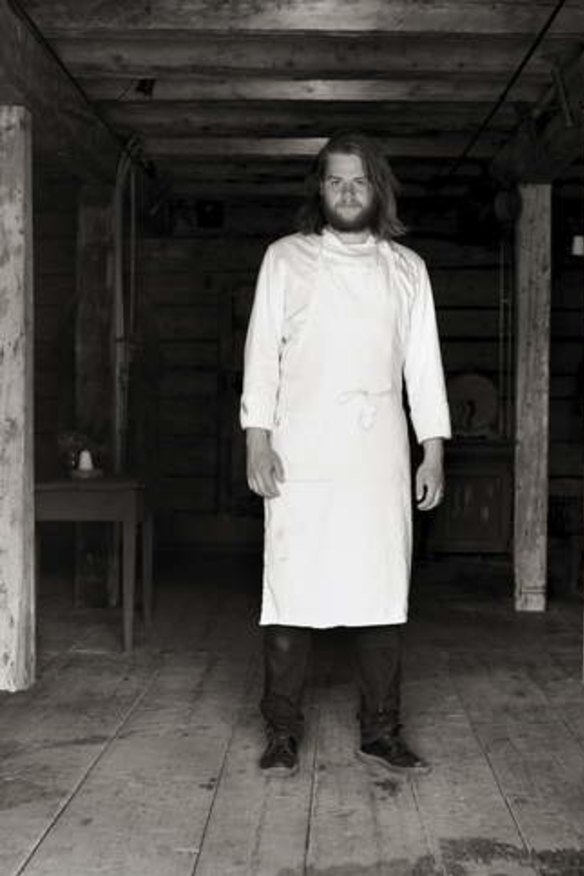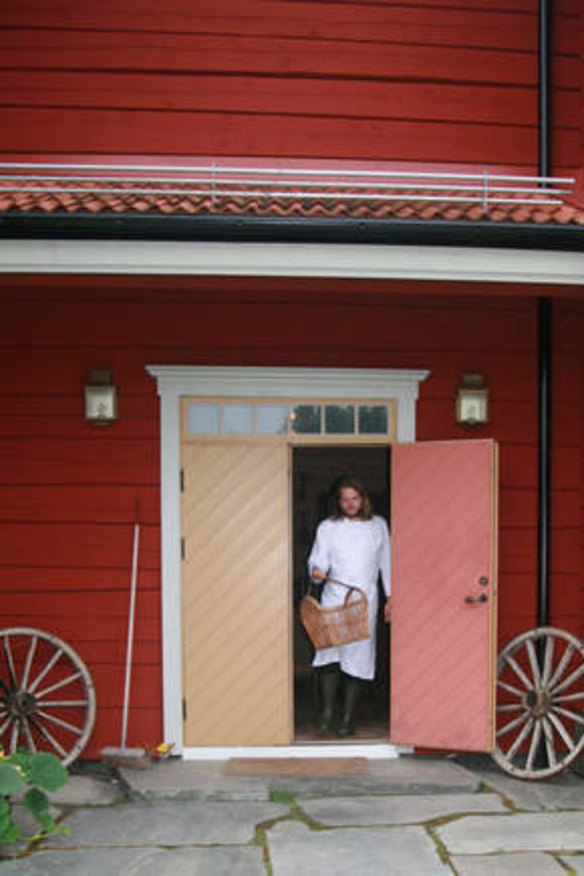Gorgeous to look at ...
... But are these cheffy books really for cooking? <b>Danielle Young</b> puts one to the test.

Lichen, year-old autumn leaves and pig's blood are not on my usual weekly shopping list.
But as an adventurous home cook fascinated by the idea of local foraging and one who one day hopes to find a truffle under her very own inoculated oak tree, I am drawn to the challenge of cooking from Scandinavian chef Magnus Nilsson's new cookbook Faviken, named after his restaurant .
Nilsson stormed on to the food scene in 2012 - ranking 34th on the World's 50 Best Restaurants list, retaining the spot again this year. Not bad for an isolated eatery 750 kilometres north of Stockholm, a restaurant with no set menu, but rather offering whatever Nilsson has grown, found or hunted on any given day.
Anyone who follows the best restaurant awards will have seen an increase in the number of Scandinavian restaurants in the mix, with Danish Noma holding the top spot three years running (until overtaken this year by El Celler de Can Roca in Spain). Clearly something is happening in food in Scandanavia.
Nilsson, who trained in France, departs from the usual routine of classically trained chefs who spend hours creating complicated sauces and emulsions. He grew up hunting, foraging and fishing and is focused on getting the very best from seemingly basic ingredients. He concerns himself with how and at what age an animal is killed. He is meticulous in storing and preserving what he has foraged and his drying of fish is an art form in itself.
At first glance I think this book is about slow food, but I soon see that Nilsson is about raw food and fresh food, paying the highest respect to whatever he is cooking.

But it's a cookbook, and so I must choose a recipe. The first recipe I'm tempted to replicate is "broth of autumn leaves". This looks to be beautifully simple with only four ingredients: mushrooms, clean moss (as if you would use any other kind), fresh autumn leaves and a handful of autumn leaves from last year. This is where I hit my first snag, I have neglected to store some leaves from last autumn.
My second hurdle is the recipe doesn't stipulate what type of autumn leaves one should use. While we have an abundance of deciduous trees here in Canberra, the thought of choosing a toxic variety gives me pause.
I want to cook something I'm unfamiliar with, something that will challenge me, and finally I settle on "wild trout roe in a warm crust of dried pig's blood". I've never cooked with pig's blood. And I'll admit it doesn't sound completely enticing - even for an adventurous omnivore - but the picture is oh so pretty. It looks as though it could be a sushi roll in seaweed.
The ingredients list begins:
For the croustades
100g unbleached wholemeal flour
1 pinch salt
100g double (heavy cream)
50g pig's blood, plus 100g for dipping
1 egg yolk
10g melted butter
fresh, unsalted trout roe, taken out of the fridge about 2 hours before serving
neutral oil for frying
salt
For the custard
100g pig's blood
100g whole eggs
25g butter
I have most of the ingredients for this recipe in my pantry, but the pig's blood is a bit of a challenge. Visiting several butchers I am greeted with a strange look and "but why?"
In desperation, I am starting to plan the emulsification of a pig's liver when Unique Meats at the Fyshwick markets calls to say it has a bucket of beef blood on hold for me. Beef blood will do. I am starting to get excited.
With a plastic bag of fresh blood in my hand - no charge - I head into the kitchen. But the blood turns out to be not my only challenge. The recipe calls for a croustade iron that you heat in oil then dip into a batter before submerging into oil for a to crisp the croustade shells.
I don't own one, so I decide to use the outside of a mini-muffin tin.
But I have problems with the batter - made from flour, cream, blood, egg yolk and a little butter and salt. It ends up more like a pastry, solid and dense instead of runny, as does my second attempt.
My batter clearly isn't suitable for dipping, with croustade iron or muffin tin, so again, it's time to improvise. I opt for pastry shells that, although not nearly as delicate as the dried blood cases at Faviken, do work. I take some solace in Nilsson's own admission in his book that using a croustade iron is a truly hellish task.
Working with a bowl of fresh animal blood may be too much for some home cooks. It does feel slightly primal and the smell is quite pungent. But for those, like me, who prefer their steak on the blue side, it shouldn't be too distasteful.
I dip the cooled shells into the blood then bake them once more to dry the blood. Nilsson suggests doing this three times, but I need to do it six times to get the seemingly required result.
Once the shells have cooled again, I add the blood custard - made simply with equal quanities of blood and eggs and a chunk of butter - but what started out a bright and vibrant red has cooled to a muddy, slightly unappealing grey. I fill the shells and set them aside until ready to serve.
The recipe calls for fresh, unsalted trout roe mounded on top. I'm using lumpfish caviar (yet another substitute), but at least the dish is completed and ready to taste.
Although I am slightly apprehensive about the dish, knowing it was a long way from what Nilsson would plate up at Faviken, I can see how the crunch of the croustade and the smoothness of the custard would work with the delicacy of the caviar. But sadly, I am rather underwhelmed with my version of it.
I was hoping this dish would blow my mind, that the effort to source the unusual ingredients would be well worth it and I would be hooked on this cookbook. Instead I'm slightly frustrated.
I am not usually frustrated in the kitchen. I have cooked my way through The French Laundry by Thomas Keller and have emulated some of Tetsuya's recipes with great success. I am even currently cooking from Quay by Peter Gilmore. However, Faviken seems to be quite a different thing altogether.
It's beautiful to read and inspires a desire to use clean, fresh ingredients, though not for the faint-hearted. But hey, who knows? I might just store some autumn leaves for next year.
Danielle Young is a Canberra public servant. Faviken, by Magnus Nilsson, was published by Phaidon last year ($65).